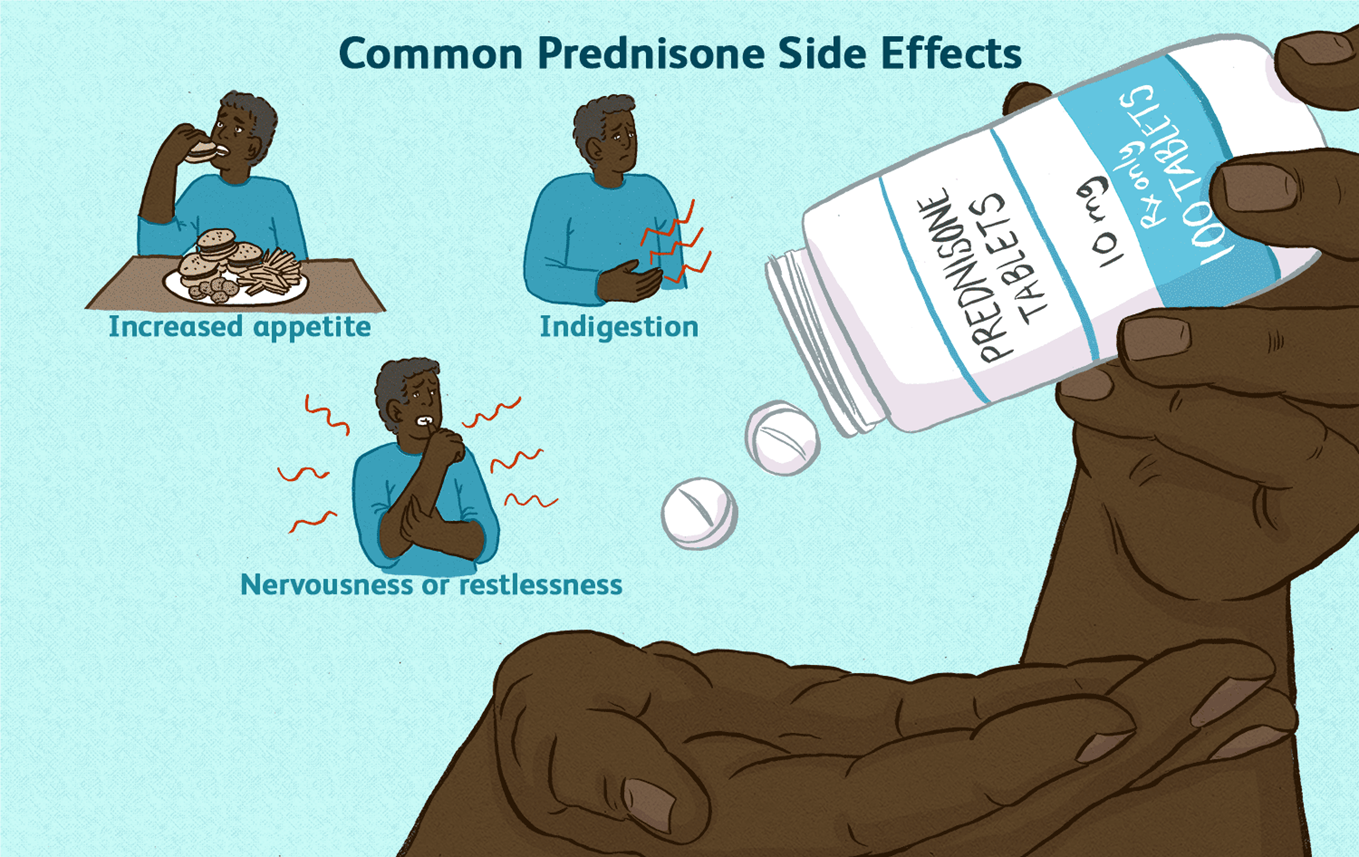A nurse is educating a client with systemic lupus erythematosus about the use of prednisone. Which piece of information should be prioritized?
Prednisone should never be discontinued abruptly.
Long-term effects of prednisone include redistribution of fat.
Prednisone can lead to sodium and fluid retention.
Prednisone might cause the client to feel jittery or nervous.
The Correct Answer is A
Choice A rationale:
Prednisone is a corticosteroid that suppresses the body's natural production of cortisol. Cortisol is a hormone that is essential for life, and it plays a role in many important bodily functions, including:
Regulating blood sugar levels Maintaining blood pressure Reducing inflammation Responding to stress
When a person takes prednisone for a long period of time, their body begins to rely on the medication to provide cortisol. If the medication is stopped suddenly, the body cannot produce enough cortisol on its own, which can lead to a life-threatening condition called adrenal insufficiency.
Adrenal insufficiency can cause a variety of symptoms, including: Extreme fatigue
Weakness Dizziness Nausea Vomiting Abdominal pain Confusion
Loss of consciousness
To prevent adrenal insufficiency, it is important to taper off prednisone slowly over a period of time. This allows the body to gradually adjust to producing cortisol on its own.
Here are some additional details about why prednisone should never be discontinued abruptly: The risk of adrenal insufficiency is highest when prednisone has been taken for more than 3 weeks. The longer a person has been taking prednisone, the slower the taper should be.
It is important to follow the tapering instructions provided by the healthcare provider.
If a person experiences any symptoms of adrenal insufficiency, they should seek medical attention immediately.

Nursing Test Bank
Naxlex Comprehensive Predictor Exams
Related Questions
Correct Answer is D
Explanation
Rationale for Choice A: Ensuring the client is warm
While maintaining client warmth is important for comfort and to prevent hypothermia, it is not the immediate priority upon arrival in the postoperative unit. Thermoregulation can be addressed after more urgent assessments have been completed.
Rationale for Choice B: Participating in hand-off report
A thorough hand-off report is essential for continuity of care, but it does not take precedence over assessing the client's immediate physiological status. The nurse can gather information from the report while simultaneously performing essential assessments.
Rationale for Choice C: Checking the surgical dressings
Monitoring surgical dressings is a crucial aspect of postoperative care, but it does not take priority over assessing fluid and blood output. Excessive bleeding or fluid shifts can rapidly compromise the client's hemodynamic stability and require prompt intervention.
Rationale for Choice D: Assessing fluid and blood output
This is the priority action for several reasons:
Monitoring for Hemorrhage: Early detection of excessive bleeding is crucial to prevent hypovolemic shock, a life-threatening complication. Postoperative bleeding can occur internally or externally, and prompt assessment of fluid and blood output allows for timely interventions to control bleeding and maintain hemodynamic stability.
Assessing Fluid Balance: Maintaining fluid balance is essential for optimal organ function and electrolyte balance. Postoperative clients are at risk for fluid imbalances due to blood loss, fluid shifts, and the use of diuretics or IV fluids. Assessing fluid intake and output helps to identify and address fluid imbalances early.
Evaluating Renal Function: Urine output is a key indicator of renal function. Postoperative clients are at risk for acute kidney injury due to factors such as hypotension, blood loss, and nephrotoxic medications. Assessing urine output helps to detect early signs of kidney dysfunction and initiate appropriate interventions.
Guiding Fluid and Blood Product Replacement: The assessment of fluid and blood output provides essential information to guide the administration of fluids and blood products as needed. This ensures that the client's fluid status and oxygen-carrying capacity are maintained within safe parameters.
Therefore, assessing fluid and blood output takes priority as it allows the nurse to identify and address potential life- threatening complications promptly, as well as guide interventions to maintain fluid balance and organ function.
Correct Answer is B
Explanation
Choice A rationale:
Contact inhibition is a normal mechanism that regulates cell growth. When normal cells come into contact with each other, they stop growing. This prevents uncontrolled growth and the formation of tumors.
Benign tumor cells do not typically lose contact inhibition. They still respond to contact signals from neighboring cells and stop growing when they come into contact with each other.
However, they may grow in an uncontrolled manner due to other factors, such as mutations in genes that regulate cell growth.
Choice C rationale:
Invasion is a characteristic of malignant (cancerous) tumors, not benign tumors. Malignant tumors have the ability to invade surrounding tissues and spread to other parts of the body.
Benign tumors, on the other hand, are localized and do not invade surrounding tissues. They may grow and compress nearby tissues, but they do not spread.
Choice D rationale:
Anaplasia is a term used to describe the loss of differentiation of cells in a tumor. This means that the cells no longer resemble the normal cells from which they originated.
Anaplasia is a characteristic of malignant tumors, not benign tumors. Benign tumor cells typically retain some of the characteristics of the parent cells.
Whether you are a student looking to ace your exams or a practicing nurse seeking to enhance your expertise , our nursing education contents will empower you with the confidence and competence to make a difference in the lives of patients and become a respected leader in the healthcare field.
Visit Naxlex, invest in your future and unlock endless possibilities with our unparalleled nursing education contents today
Report Wrong Answer on the Current Question
Do you disagree with the answer? If yes, what is your expected answer? Explain.
Kindly be descriptive with the issue you are facing.
